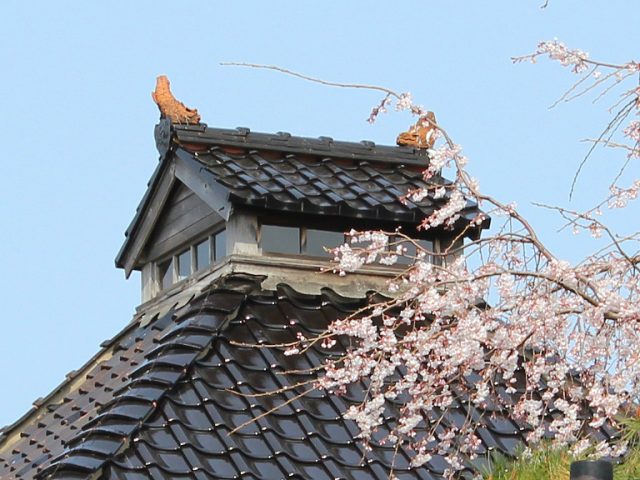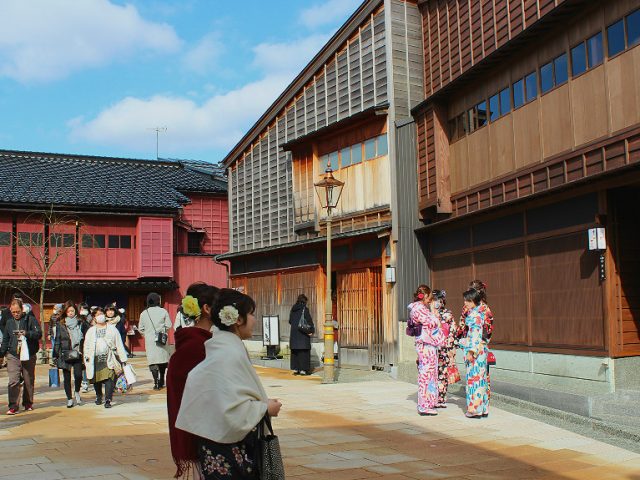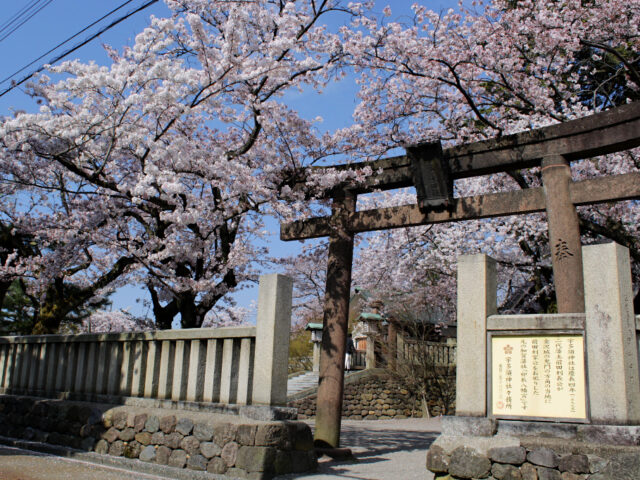The Samurai District of Kanazawa: Nagamachi
Welcome to the Samurai District
Literally meaning “the long samurai residence neighborhood of Nagamachi,” Nagamachi Buke-yashiki was home to high and mid-ranking samurai soldiers of Edo-era Kanazawa and is currently home to three of Kanazawa’s five samurai museums. It’s also an easy walk from both Kaname Inn Tatemachi and the western geisha district of Nishi Chaya Gai.
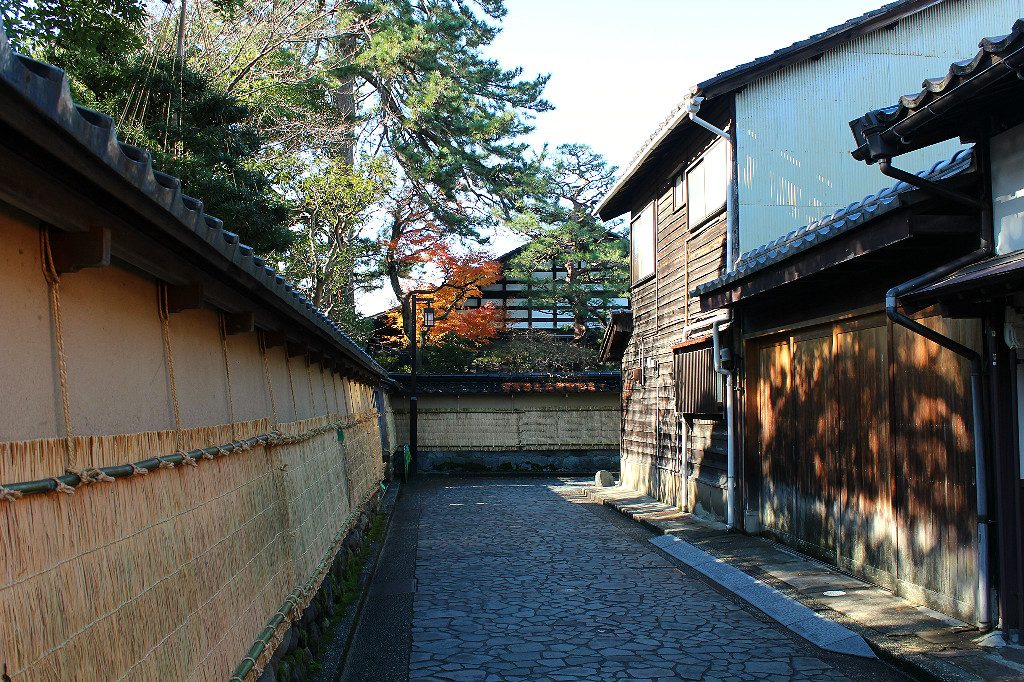
The tawny stone and mud walls that line the streets turn the neighborhood into a fortress. Each gate to the residences behind these walls is carefully constructed to close quickly and securely in the event of an attack.
The walls of the Samurai District are famously layered with sheets of rice straw in winter to protect the outer coating from harsher snow storms. Their appearance in early December indicates that winter is nearly here.
Gated Gardens & Winding Waterways
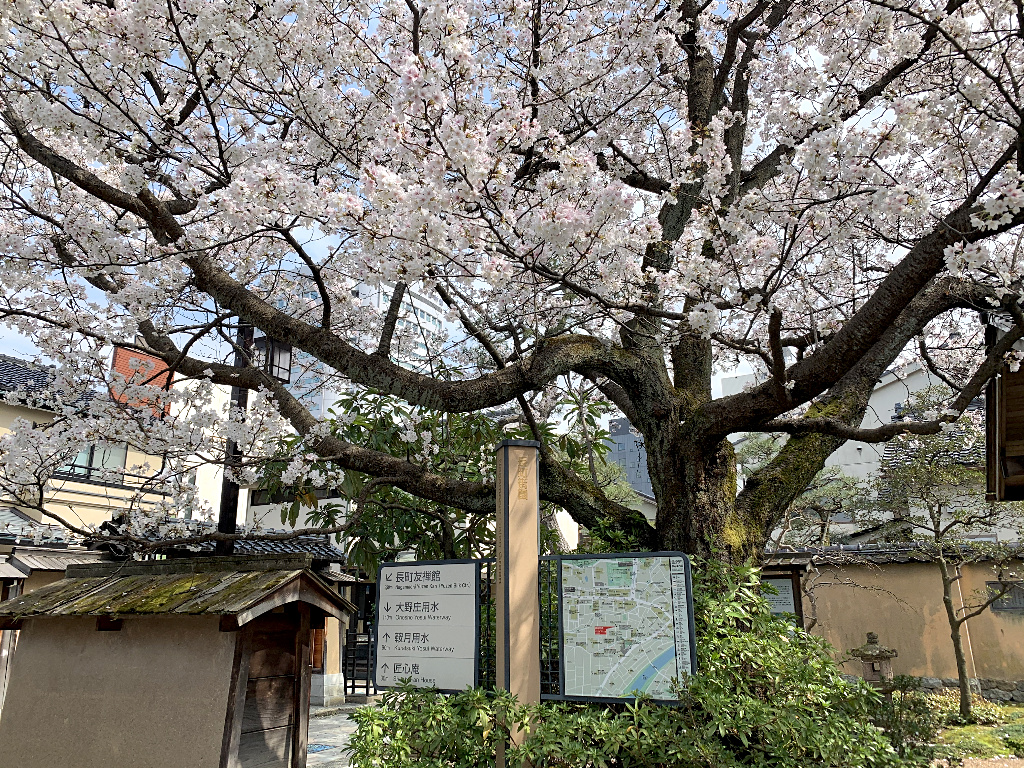
Both private and public gardens pepper the neighborhood. If the weather is good, some residents open up their private garden areas during daylight hours. Stroll through an old samurai’s backyard and take a peak inside windows at the finely preserved homes.
As the cobblestone street comes to an end, it meets with another moat-lined road running parallel to Seseragi Street. These moats both protected the samurai district and supplied water to Kanazawa Castle from the nearby Sai River. Today, they serve as reservoirs and drains, maintaining the river’s water level to prevent flooding during Hokuriku’s rainier seasons. The one in the heart of Nagamachi is the Ohno-sho Waterway, the oldest in the castle town, constructed around 1590.
Kaburaki: Museum, Shop & Café in One
 Kutani-yaki pottery, image courtesy of the City of Kanazawa
Kutani-yaki pottery, image courtesy of the City of Kanazawa
The main road changes from asphalt to cobblestone in the longest stretch. Kaburaki, a kutani-ware porcelain shop and restaurant marks the jog in the road, with a sister shop just a few steps away.
Kutani ceramics have a long and proud history in Ishikawa Prefecture, and this shop offers a wide range of traditional and innovative Kutani pieces. Their crown jewel is their “Kaburaki Glass,” wine glasses with a Kutani-ware stem and base, created in collaboration with German fine-glass crafter, Spiegelau Glass.
Kaburaki is extremely customer friendly, regardless of budget or country of origin. English is limited among the staff, but they are approachable, friendly, and eager to interest you in any piece that might suit your fancy.
The largest room in the shop is divided in two. Once side showcases factory-produced pieces that follow traditional Kutani-ware patterns, perfect for smaller budgets and collecting fun pieces that are simply “Kanazawa-esque.” The other side displays unique, hand-painted works, often by artists well-known and respected in the region. Shop here if you want to splurge, brag, or just find that one special item to give you that KonMari spark of joy.
Check out the various ceramic styles that evolved throughout the craft’s history, enjoy a snack and tea on Kutani-ware while overlooking the shop’s private garden.
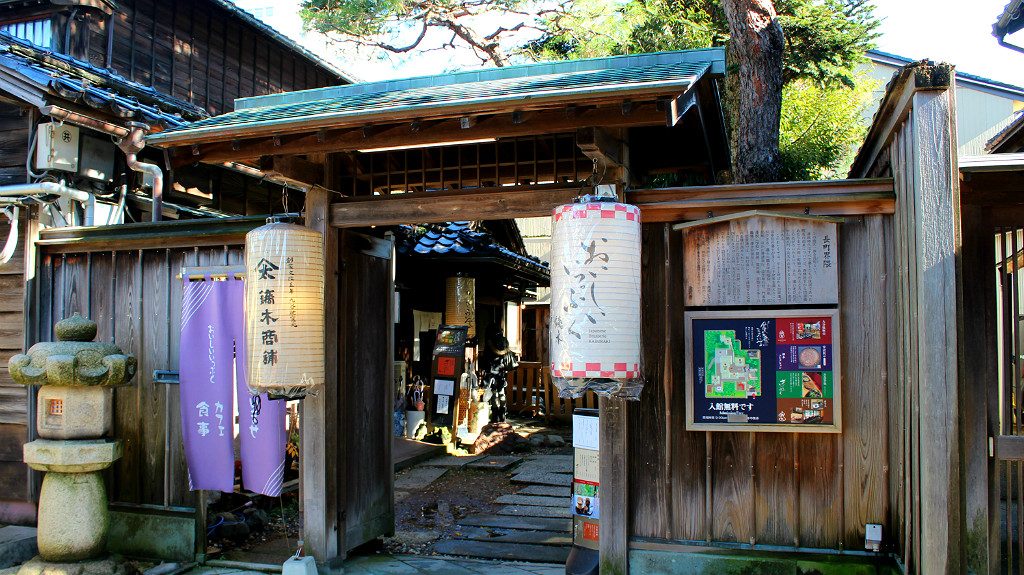
Kaburaki
9:00 a.m. – 10:00 p.m.
closes at 6:00 p.m. Sunday & Monday
An Unusual Teahouse, a Treasured Collection
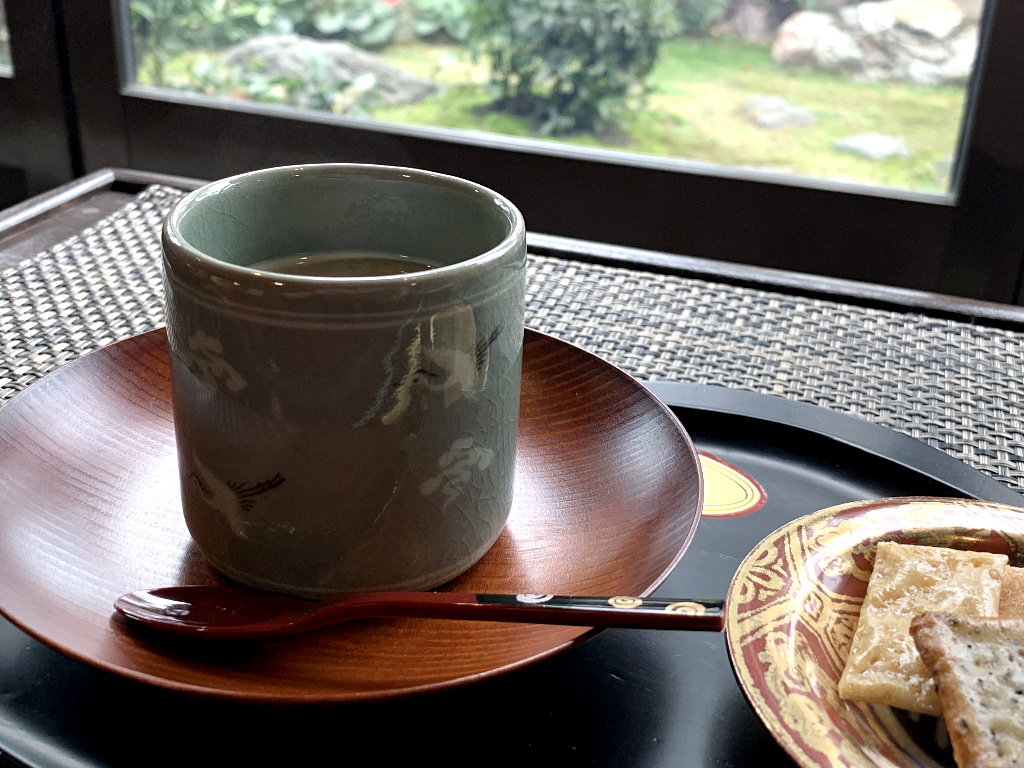
Hidden around the corner of the main intersection of the Samurai District is Teahouse Nikorei. A sign along the outside indicates the nearby display of dolls. Following the signs leads to a home with three entrances. Open the right-most one, and head inside.
The cheerful gentleman owner speaks a little English, but his menus are only Japanese. Escorting you to the back rooms, he tells you to sit where you like. Most chairs are lined along what was once the stoop of this 150-year-old house and overlook the garden. Turn around, and you’ll see more than 50 very old and authentic Japanese dolls. The dolls range from royal courtiers to bib-wearing gosho dolls to sword-wielding samurai. When asked about them, the owner says he started with only two.
He inherited a lovely set dating back to the Edo period and fell in love with their history and detail. When he found another he liked, he brought it home. And another. And another. Nowadays, he hopes to keep his collection contained, so he only selects a new doll when the condition is very good and he particularly likes it. He also removes one doll to make room.
The garden is green, quiet and well hidden from the street. The menu always offers matcha green tea, coffee and zenzai, a soup dessert of sweet beans and rice cake. I enjoyed a hot sweet sake with rice crackers served on a handmade ceramic plate. In summer, he sometimes offers green tea ice cream and shaved ice desserts.
Teahouse Nikorei
10:00 a.m. – 5:00 p.m. (11:00 a.m. – 4:00 p.m. during low season)
closed some Wednesdays and Thursdays, hours may vary
Daily Edo Life, Memorialized
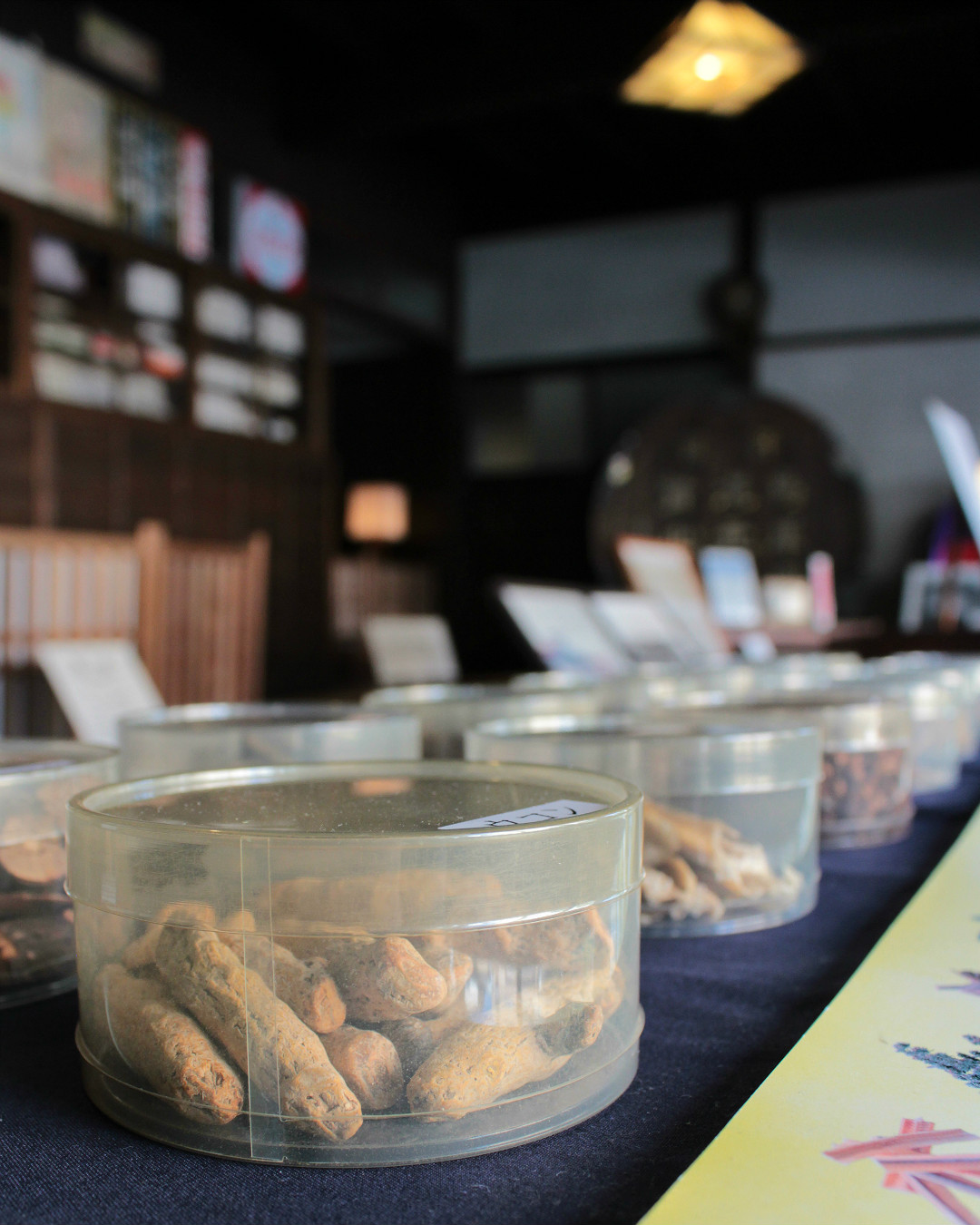
A minute’s walk south is a preserved 450-year-old Chinese medicine pharmacy, one of the oldest shops in the Samurai District and a museum, the Shinse Memorial Hall. Inside, the museum is a hodgepodge of history and crafts related to the neighborhood. The traditional storefront displays the day-to-day business and where each member of the staff sat per their rank. Traditional medicines occupy bottles to one side.

Further in, temari, traditionally sewn handballs for children or young brides-to-be, fill several rooms. Upstairs, antiques from once-neighboring stores and homes are on display alongside traditional Kaga region crafts.
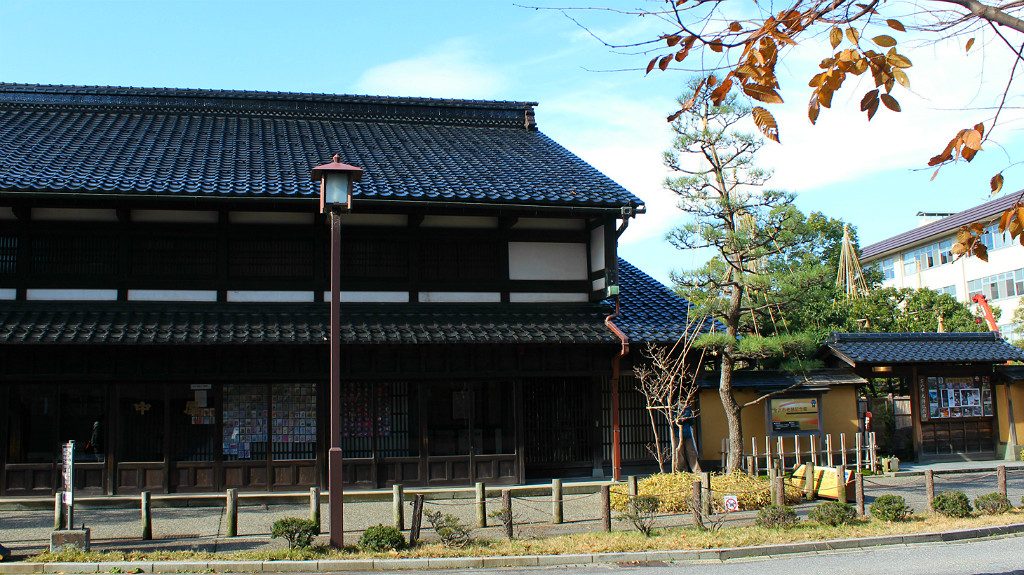
Shinse Memorial Hall
9:30 a.m. – 5:00 p.m. (last entry, 4:30 p.m.)
100 yen (free with cultural passport)
The Daimyo’s Samurai Museum & the Black Battle Bunny
No photography inside this one!
Just a few steps from the pharmacy is the Maeda Tosanokami-ke Shiryokan Museum, dedicated to the samurai family of the ruling lord’s second son. Spanning two floors, most of the museum’s contents are preserved documents and relics between the Maedas and the ruling Shogunate. History buffs can find letters written by Oda Nobunaga and Toyotomi Hideyoshi. However, English is limited.
Despite the austere nature of the museum’s contents, the real appeal for most visitors will be the two sets of samurai armor featured inside, one on each floor. In particular, the set on the first floor is the museum’s pride and joy. Nearly the entire set is covered in black lacquer, and is pronounced by a pair of silver rabbit ears, meant to evoke the wearer’s playfulness and cunning in battle.
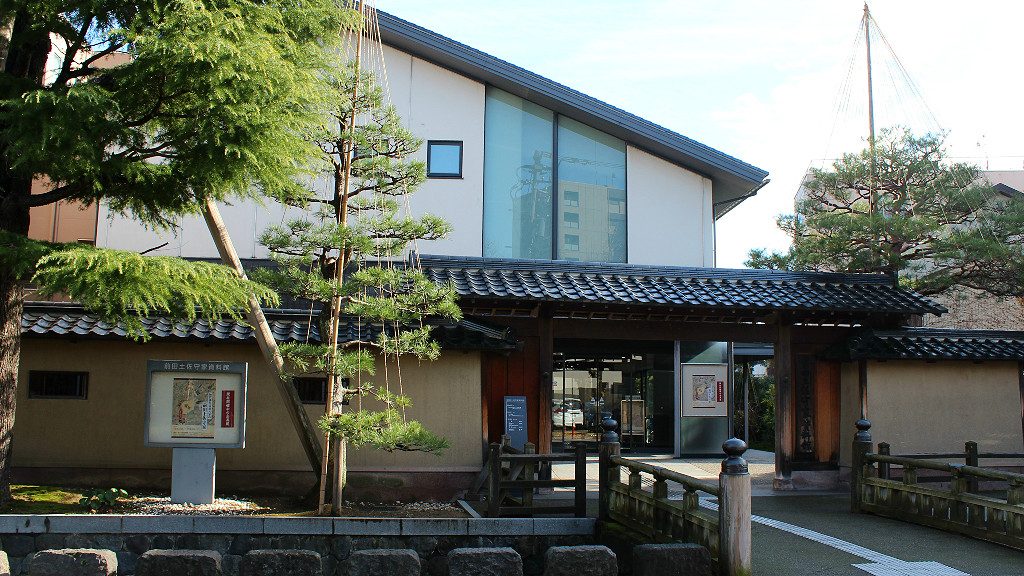
Maeda Tosanokami-ke Shiryokan Museum
9:30 a.m. – 5:00 p.m. (last entry, 4:30 p.m.)
300 yen (free with cultural passport)
Nomura: Of Warriors & Wealth
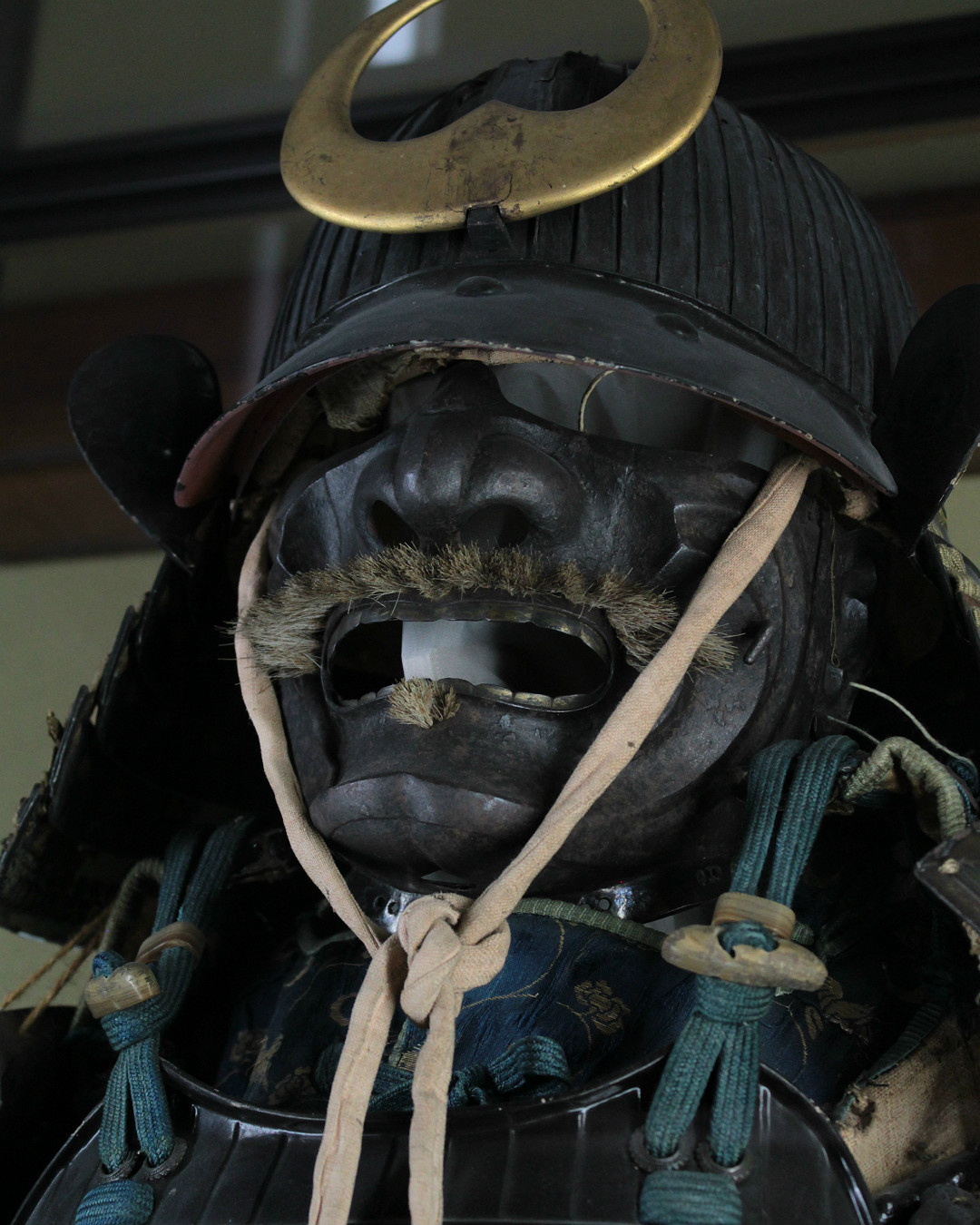
The first thing to greet visitors who enter Kanazawa’s famous Nomura Samurai Family Residence is the clan’s impressive mustachioed suit of samurai armor. Most of the museum is a celebration of the house itself, originally belonging to a merchant family whose wealth is evident throughout the premises.
The private garden inside is one of the top rated throughout Japan, earning it two Michelin stars. The cultivated plants, carefully chosen stones, and playful koi fish can be enjoyed from several locations in the house. It’s even viewable from the upstairs, where matcha green tea service is available.
 a nightingale box, featured at the Nomura Samurai Family Residence in Kanazawa
a nightingale box, featured at the Nomura Samurai Family Residence in Kanazawa
Don’t miss visiting the back area of the building where it connects to the old storehouse. Here is Nomura’s gallery proper, featuring his katana blades among other items, including a handwritten note from a feudal lord, thanking Nomura for the gift of an enemy’s head.
Nomura Samurai Family Residence
9:30 a.m. – 5:30 p.m. (April to October)
9:30 a.m. – 4:30 p.m. (October to April)
550 yen
Silk and Horses
Kyukeikan Resthouse and Gallery
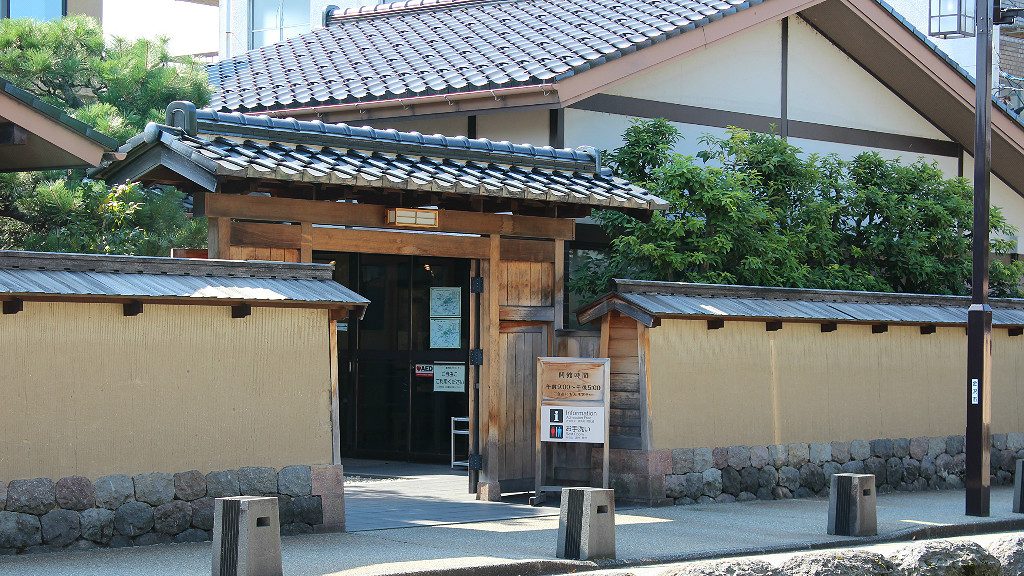
A little further down the road is the Kyukeikan Resthouse, a restored machiya-style house turned information hub and resting spot. Volunteers at the resthouse can answer questions about the neighborhood and about Kanazawa in general.
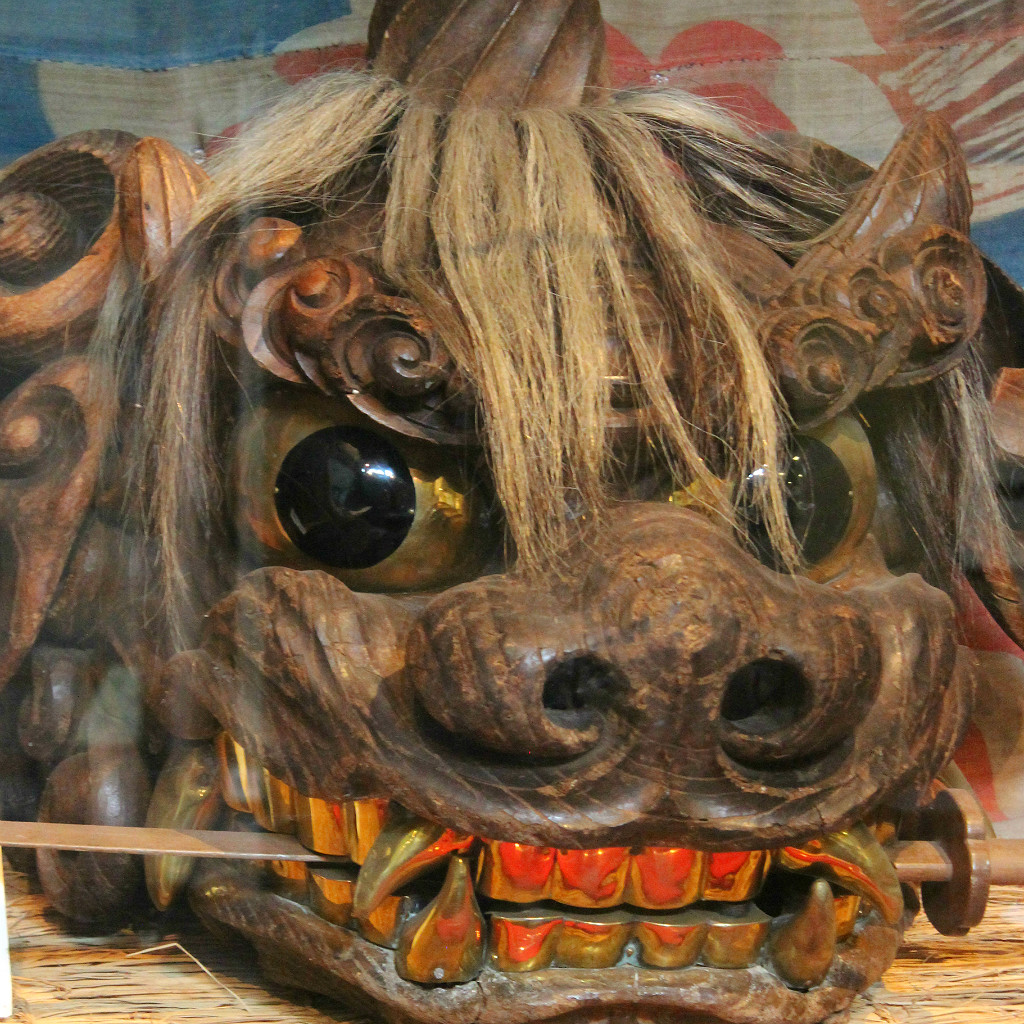
In addition to toilets and air conditioning, this resthouse also includes displays of the area’s crafts specialties. When we visited, the eyes of this festival Lion’s Head seemed to follow us.
Takada Residence and the Samurai’s Horse Stables

Beyond that is the remains of the Takada family, a moderately wealthy samurai family home whose horse stables and garden area still stand.
Nagamachi Kaga-yuzen Kimono and Silk Gallery (and Kimono Rental)
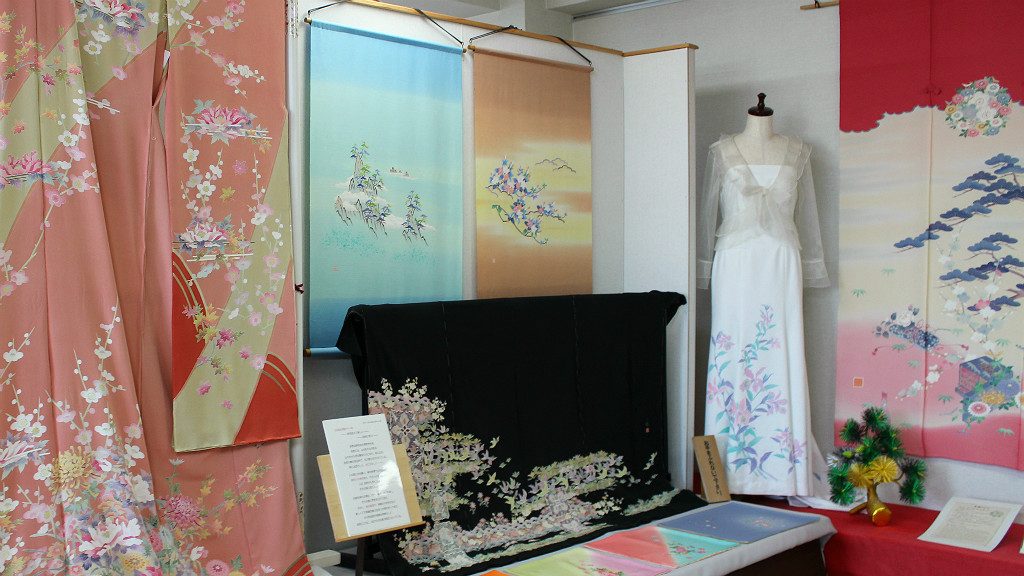
For those interested in kimono fabric and creation, head west along the road next to the Takada Family Remains. About two blocks down on the right is the Nagamachi Yuzen-kan, an old warehouse slightly away from the street that houses a gallery on the second floor. The elaborate, multi-step dyeing processes is illustrated on the third floor and a workshop is occasionally open.
Kimono rentals are also available here, and it’s location at the far end of Nagamachi makes it a great first stop. Dress up and stroll the streets of the Samurai District in traditional style!
Nagamachi Yuzen Kan
9:30 a.m. – 5:00 p.m.
temporarily closed
In the Footsteps of Foot Soldiers

From the Takada Family Remains, continue down the road about two blocks. On the right is the open house Ashigaru Shiryokan Museum. These two preserved houses belonged to lower-class samurai foot soldiers. Both buildings are free to enter. Each houses information and examples of how the soldiers lived and worked. One even includes a map of the pilgrimage the army took on foot each year to offer tribute to the ruling Shogunate. English from the staff is hit or miss, and many of the displays are in Japanese only. The museum provides a glance at their owners’ limited lifestyles in a bygone era.
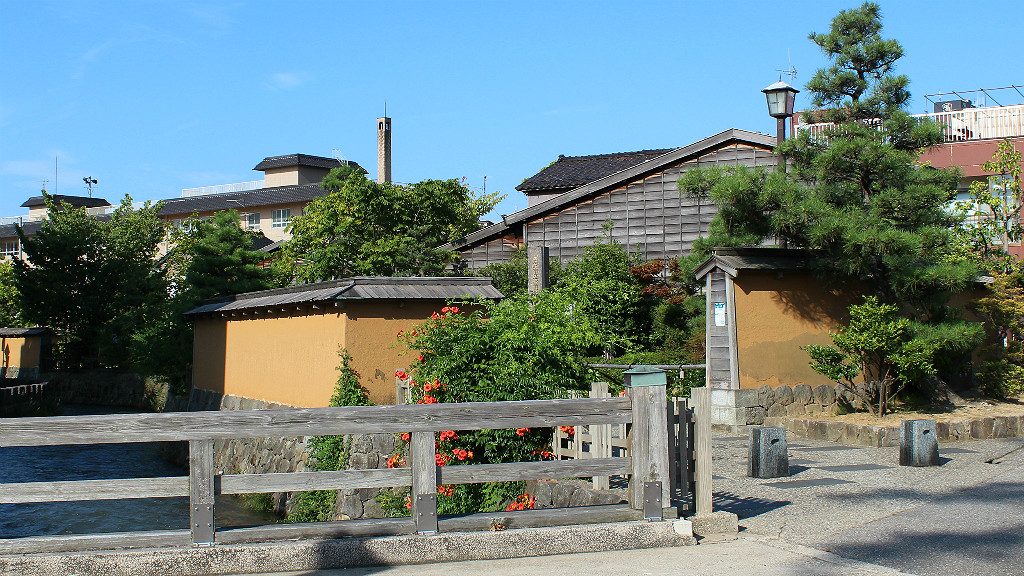
Ashigaru’s entrance is also easy to miss, hidden by bushes and a protective wall, by the bridge just past the nearby hospital. We recommend summer visitors come early in the morning, as the buildings do not supply air conditioning.
Ashigaru Samurai Homes Museum
9:30 a.m. – 5:00 p.m.

About a decade ago Rachel fell off a bus and then fell in love with this traditional-crafts and ice-cream-consuming capital of Japan. Editor and amateur photographer with a penchant for nature and history. Not actually fifty songbirds in a trench coat. (Former penname: Ryann)


